If An EPA Recognized Lead Test Kit Indicates No Lead, Can A Non-Certified Firm Do The Work?

This can be tricky. Keep in mind that for RRP purposes, only a certified renovator or licensed lead testing professional can do testing to determine that no lead is present. As EPA indicates in their answer below, if the certified renovator working for a certified firm does the testing, that firm must maintain the required documentation regarding the testing. So, if the firm that did the testing is doing the renovation, and the testing shows no lead, they can hire (subcontract to) non-certified firms and non-certified workers to do the work.
Here is one question and answer I found on the EPA FAQ page to help clarify:
Question: If a certified renovator using an EPA-recognized test kit determines that the components that will be affected by a renovation are free of lead-based paint, can a firm that does not have RRP certification do the actual renovation work? What record-keeping requirements would apply?
EPA Answer: Where a certified renovator uses an EPA-recognized test kit, follows the kit manufacturer’s instructions, tests each component affected by the renovation, and determines that the components are free of paint or other surface coatings that contain lead at regulated levels, the renovation can be performed by a non-certified firm and without regard to the work practice standards or record-keeping requirements of the RRP Rule. See 40 CFR 745.82(a)(2).
However, the certified renovator and firm making the lead-based paint free determination are still subject to the recordkeeping requirements of 745.86(b)(1)(ii) and 745.86(a). Specifically, the certified renovator must prepare a record that states the brand of test kit used, the components tested, and results of the tests. The certified renovator’s firm must retain a copy of this record for three years. EPA further recommends that the firm actually performing the renovation also retain a copy of these records to demonstrate that compliance with the RRP Rule was not required.
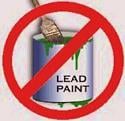 So it appears that a non-certified firm can do the work if testing that proved no lead was found was done by someone else, as long as the determination was made by a certified lead inspector or risk assessor, or by a certified renovator using an EPA recognized test kit and following the kit manufacturer’s instructions. The key is however, that the non-certified firm must have written proof from the person or business that did the testing that there is no lead in the work areas to be disturbed.
So it appears that a non-certified firm can do the work if testing that proved no lead was found was done by someone else, as long as the determination was made by a certified lead inspector or risk assessor, or by a certified renovator using an EPA recognized test kit and following the kit manufacturer’s instructions. The key is however, that the non-certified firm must have written proof from the person or business that did the testing that there is no lead in the work areas to be disturbed.
So, here is the rub.
If you are a certified firm and have a certified renovator do the testing, and you give the homeowner a copy of the testing report you create, that homeowner could then hire a non-certified firm to do the work because that homeowner and the non-certified firm they hire can use your test results to avoid RRP firm and work requirements. Think about this before you test and make your own best decision about if and when you will test during the sales process.

 Looking for accurate information about the EPA RRP rule?
Looking for accurate information about the EPA RRP rule? 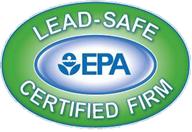
 ST. PAUL, Minn. – Feb. 17, 2011 – 3M announced today it has acquired Hybrivet Systems Inc., a leading provider of instant-read products to detect lead and other contaminants and toxins. Terms of the transaction were not disclosed.
ST. PAUL, Minn. – Feb. 17, 2011 – 3M announced today it has acquired Hybrivet Systems Inc., a leading provider of instant-read products to detect lead and other contaminants and toxins. Terms of the transaction were not disclosed. Hybrivet Systems Inc.’s flagship product is LeadCheck® Swabs, which is widely recognized as the fastest, easiest, most cost-effective lead detection product on the market. LeadCheck® has been at the forefront of lead detection and awareness since 1991.
Hybrivet Systems Inc.’s flagship product is LeadCheck® Swabs, which is widely recognized as the fastest, easiest, most cost-effective lead detection product on the market. LeadCheck® has been at the forefront of lead detection and awareness since 1991. Founded in 1987 by Marcia Stone, PhD, Hybrivet Systems Inc. is passionately dedicated to protecting the public from contaminants and toxins by offering a series of instant-read detection products. Recognized by the EPA, LeadCheck® Swabs are the most effective way for Certified Trainers and contractors to comply with the EPA Repair, Renovation and Painting (RRP) rule. Commercially available to all contractors, EPA trainers, and home owners, LeadCheck swabs help protect families, and especially children, against lead poisoning.
Founded in 1987 by Marcia Stone, PhD, Hybrivet Systems Inc. is passionately dedicated to protecting the public from contaminants and toxins by offering a series of instant-read detection products. Recognized by the EPA, LeadCheck® Swabs are the most effective way for Certified Trainers and contractors to comply with the EPA Repair, Renovation and Painting (RRP) rule. Commercially available to all contractors, EPA trainers, and home owners, LeadCheck swabs help protect families, and especially children, against lead poisoning.
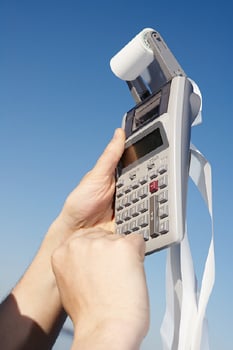 “Number of events and individuals affected: In the first year that all of the rule requirements will be in effect, there will be an estimated 8.4 million renovation, repair, and painting events where lead-safe work practices will be used due to the rule. As a result, there will be approximately 1.4 million children under the age of 6 who will be affected by having their exposure to lead dust minimized due to the rule. There will also be about 5.4 million adults who will be affected. After improved test kits for determining whether a painted surface contains lead-based paint become available (which is assumed in the analysis to occur by the second year of the rule), the number of renovation, repair, and painting events using lead-safe work practices is expected to drop to 4.4 million events per year. No change in the number of exposures avoided due to the rule is expected because the improved test kit will more accurately identify paint without lead, thus reducing the number of events unnecessarily using the required work practices.”
“Number of events and individuals affected: In the first year that all of the rule requirements will be in effect, there will be an estimated 8.4 million renovation, repair, and painting events where lead-safe work practices will be used due to the rule. As a result, there will be approximately 1.4 million children under the age of 6 who will be affected by having their exposure to lead dust minimized due to the rule. There will also be about 5.4 million adults who will be affected. After improved test kits for determining whether a painted surface contains lead-based paint become available (which is assumed in the analysis to occur by the second year of the rule), the number of renovation, repair, and painting events using lead-safe work practices is expected to drop to 4.4 million events per year. No change in the number of exposures avoided due to the rule is expected because the improved test kit will more accurately identify paint without lead, thus reducing the number of events unnecessarily using the required work practices.” Recently I published three articles to RRPedia regarding the EPA Recognized test kits. Links to these articles are at the end of this article. On November 15th, 2010, Dan Askin, President & Technical Director of
Recently I published three articles to RRPedia regarding the EPA Recognized test kits. Links to these articles are at the end of this article. On November 15th, 2010, Dan Askin, President & Technical Director of  First off, Dan clarified that the test kits are not “approved” by EPA; rather, they are “Recognized” by EPA. In order to be recognized for RRP use, test kits must pass the EPA approved testing process specified in the final rule.
First off, Dan clarified that the test kits are not “approved” by EPA; rather, they are “Recognized” by EPA. In order to be recognized for RRP use, test kits must pass the EPA approved testing process specified in the final rule.  In my articles I expressed my opinion that the
In my articles I expressed my opinion that the  In one of my articles I stated that the “Lead Check swabs contain everything you need inside the swabs. You can just squeeze the kits with your fingers as instructed, shake the swab and you are ready to test. The D-Lead kits require measuring and mixing chemicals to get ready for testing.”
In one of my articles I stated that the “Lead Check swabs contain everything you need inside the swabs. You can just squeeze the kits with your fingers as instructed, shake the swab and you are ready to test. The D-Lead kits require measuring and mixing chemicals to get ready for testing.” 
 Through my fellow NARI member contacts I have learned that on November 5, 2010, at their offices in Washington DC, the
Through my fellow NARI member contacts I have learned that on November 5, 2010, at their offices in Washington DC, the  Hybrivet Systems, Inc. and ESCA Tech, Inc. are the manufacturers of the only two commercially available
Hybrivet Systems, Inc. and ESCA Tech, Inc. are the manufacturers of the only two commercially available  At the meeting a representative from ESCA Tech, Inc asked the EPA when it was going to require that RRP training instructors demonstrate the proper use of both of the currently approved lead test kits at the EPA required Certified Renovator Training Classes. EPA responded that they were not going to require training on both kits and instructors could decide which kit they would demonstrate at the training.
At the meeting a representative from ESCA Tech, Inc asked the EPA when it was going to require that RRP training instructors demonstrate the proper use of both of the currently approved lead test kits at the EPA required Certified Renovator Training Classes. EPA responded that they were not going to require training on both kits and instructors could decide which kit they would demonstrate at the training.  Here is just one reason I will go with the Lead Check kits when I do RRP training. Using the D-Lead kits will definitely take longer than using the Lead Check kits. The certified renovator classes at eight hours long make for a long day and it is tough enough already for instructors to cover the subject matter in those eight hours. Demonstrating and using the D-Lead kits would either cause the class to go past eight hours, or time spent on other topics would need to be cut back to keep the day at eight hours. I know the students would rather not extend the day and I would prefer not to cut back on or eliminate any of the required subject matter.
Here is just one reason I will go with the Lead Check kits when I do RRP training. Using the D-Lead kits will definitely take longer than using the Lead Check kits. The certified renovator classes at eight hours long make for a long day and it is tough enough already for instructors to cover the subject matter in those eight hours. Demonstrating and using the D-Lead kits would either cause the class to go past eight hours, or time spent on other topics would need to be cut back to keep the day at eight hours. I know the students would rather not extend the day and I would prefer not to cut back on or eliminate any of the required subject matter.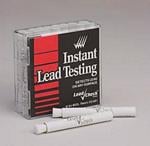
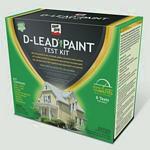
 Given the choice, as Massachusetts and EPA authorized RRP instructor, I will definitely use the Lead Check Swabs in my training classes. I offer some reasons for this choice below. However keep in mind, if you do RRP renovations, you will likely be choosing which test lead test kit to use and why for different reasons than I would as an instructor. I hope the information below helps you make a good decision when you select a lead test kit. Please feel free to add any other comparisons or consideration for choosing a lead test kit by commenting at the end of this article.
Given the choice, as Massachusetts and EPA authorized RRP instructor, I will definitely use the Lead Check Swabs in my training classes. I offer some reasons for this choice below. However keep in mind, if you do RRP renovations, you will likely be choosing which test lead test kit to use and why for different reasons than I would as an instructor. I hope the information below helps you make a good decision when you select a lead test kit. Please feel free to add any other comparisons or consideration for choosing a lead test kit by commenting at the end of this article. Massachusetts, one of the states delegated by EPA to administer and enforce the RRP rule, released a new form and protocol to be used by Massachusetts licensed lead inspectors when doing testing for lead prior to a RRP project. Although under the Massachusetts and EPA RRP rules a certified renovator can use EPA approved test kits to do this testing, as an alternative some home owners and renovators may elect to have the testing done by a lead testing professional. The following article was written by
Massachusetts, one of the states delegated by EPA to administer and enforce the RRP rule, released a new form and protocol to be used by Massachusetts licensed lead inspectors when doing testing for lead prior to a RRP project. Although under the Massachusetts and EPA RRP rules a certified renovator can use EPA approved test kits to do this testing, as an alternative some home owners and renovators may elect to have the testing done by a lead testing professional. The following article was written by 

 If home buyers aren’t aware of lead paint or the implications of buying a property that has or may have lead paint, a good home inspector may likely provide such knowledge.
If home buyers aren’t aware of lead paint or the implications of buying a property that has or may have lead paint, a good home inspector may likely provide such knowledge. 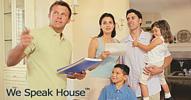 Home inspectors will help cause compliance with the EPA RRP rule in a few ways. First, they will likely make home buyers aware of the fact that if built before 1978, the home may likely contain lead paint. The only way to verify if lead paint is present is to do a lead test. Inspectors can suggest their clients ask the seller if the home has been tested and if it has to obtain a copy of the required lead inspection report. Next, if the home does have lead, or it hasn’t been tested, inspectors should inform the buyers that any renovations to the home would need to be done using lead-safe work practices. This will have two effects. The first would be to let the buyer know that lead-safe work practices are required should they be planning any renovations after purchasing the home. Second, and most critical, would be to verify that any recent renovations done at the home were done using lead-safe work practices and to verify this by making sure who ever did the work did it in compliance with the EPA RRP requirements. Again, requesting a copy of the
Home inspectors will help cause compliance with the EPA RRP rule in a few ways. First, they will likely make home buyers aware of the fact that if built before 1978, the home may likely contain lead paint. The only way to verify if lead paint is present is to do a lead test. Inspectors can suggest their clients ask the seller if the home has been tested and if it has to obtain a copy of the required lead inspection report. Next, if the home does have lead, or it hasn’t been tested, inspectors should inform the buyers that any renovations to the home would need to be done using lead-safe work practices. This will have two effects. The first would be to let the buyer know that lead-safe work practices are required should they be planning any renovations after purchasing the home. Second, and most critical, would be to verify that any recent renovations done at the home were done using lead-safe work practices and to verify this by making sure who ever did the work did it in compliance with the EPA RRP requirements. Again, requesting a copy of the  Additionally, if the work was done by the home owners themselves, or perhaps was done illegally by a non-complaint contractor, the only way to find out if the work may have contaminated the home with lead would be to have the home tested by a
Additionally, if the work was done by the home owners themselves, or perhaps was done illegally by a non-complaint contractor, the only way to find out if the work may have contaminated the home with lead would be to have the home tested by a  Many remodelers have shared with me that they have been entertaining the idea of become licensed lead inspectors. Recognizing the new EPA RRP rule as here to stay, many see doing inspections as an opportunity to diversify their business's offerings and at the same time add some much needed revenue due to our current economic challenges.
Many remodelers have shared with me that they have been entertaining the idea of become licensed lead inspectors. Recognizing the new EPA RRP rule as here to stay, many see doing inspections as an opportunity to diversify their business's offerings and at the same time add some much needed revenue due to our current economic challenges. Upon successful completion of the examination and a lead physical and blood test, you need to complete an apprenticeship program with a licensed Master Lead Inspector. It costs between $3,000 and $5,000 to do an apprenticeship. You must work with the Master Lead Inspector for a total of 80 hours and you must accompany the Master inspector on 15 inspections. The 15 inspections will consist of 7 Initial Inspections (5 using the XRF gun and 2 using sodium sulfide), 6 re-occupancy reinspections or final deleading reinspections, and 2 PCADs (post compliance assessment determinations).
Upon successful completion of the examination and a lead physical and blood test, you need to complete an apprenticeship program with a licensed Master Lead Inspector. It costs between $3,000 and $5,000 to do an apprenticeship. You must work with the Master Lead Inspector for a total of 80 hours and you must accompany the Master inspector on 15 inspections. The 15 inspections will consist of 7 Initial Inspections (5 using the XRF gun and 2 using sodium sulfide), 6 re-occupancy reinspections or final deleading reinspections, and 2 PCADs (post compliance assessment determinations). 


